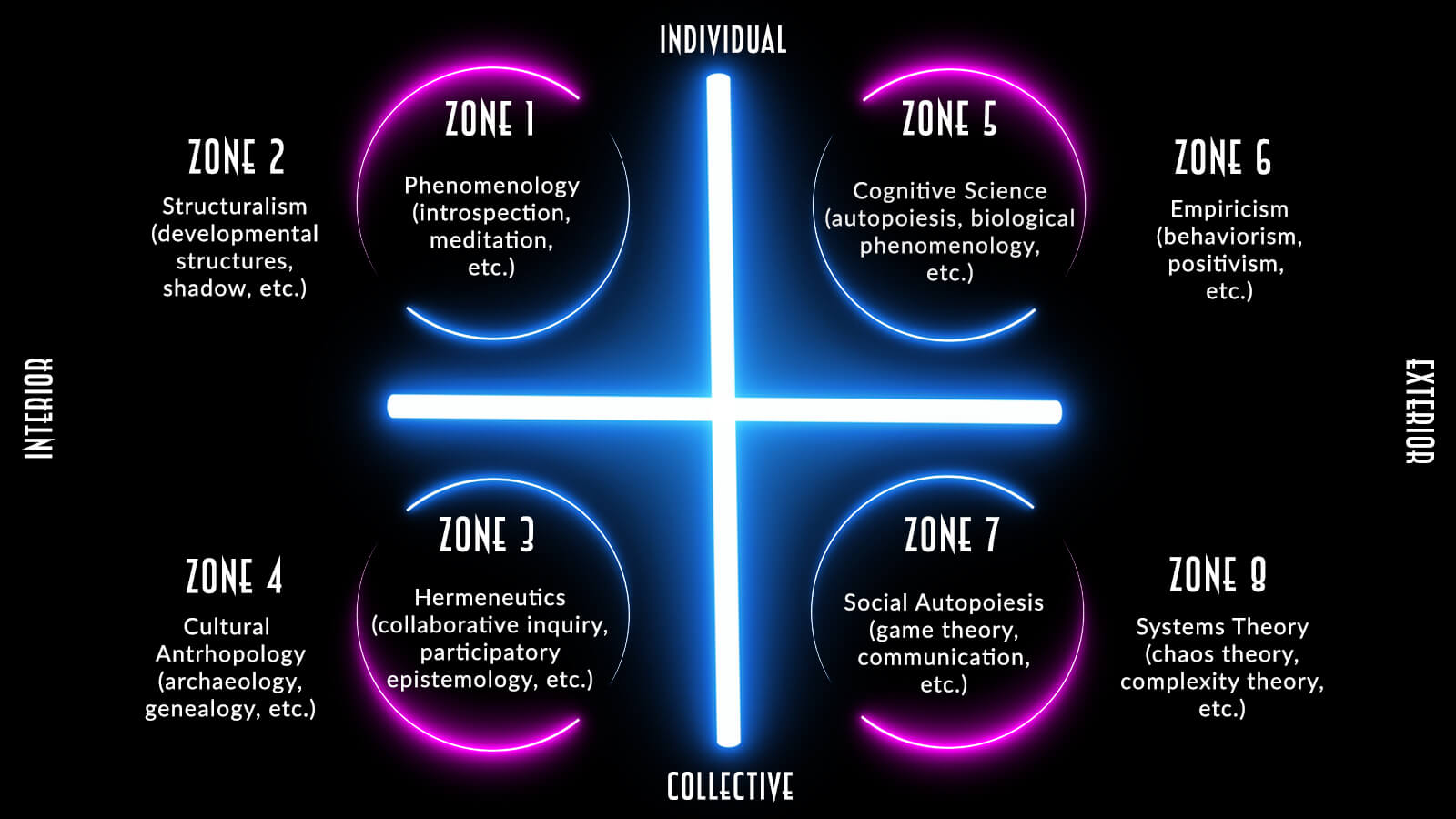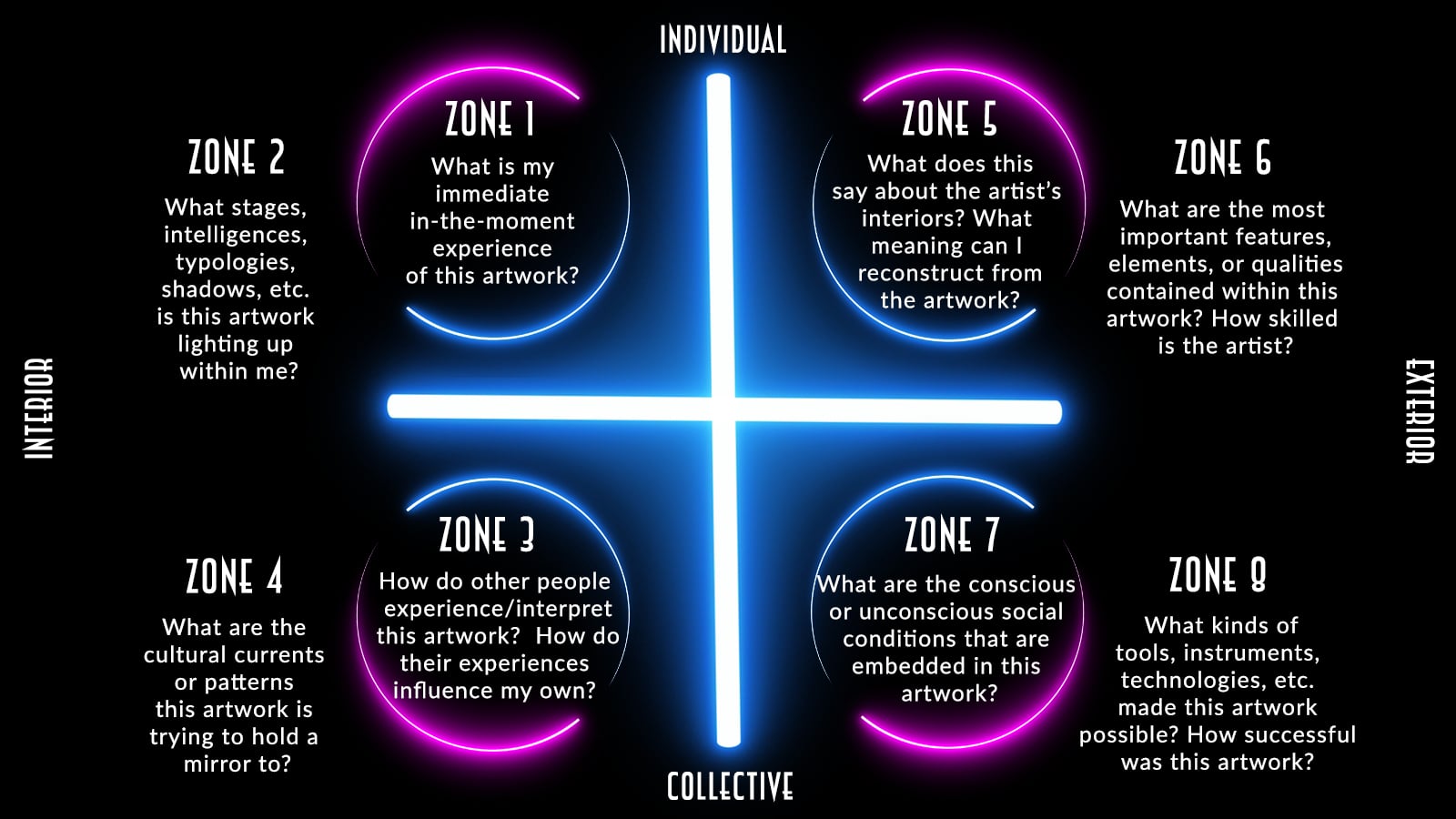“The 8 indigenous perspectives thus enact different (but tetra-related) event horizons—phenomenological worlds or zones, or what I will sometimes call “hori-zones”—horizons of awareness within which various types of occasions arise (or can arise). A hori-zone is a space of possible experience for sentient beings in general. A hori-zone is a meeting place of first, second, and third persons, as they mutually enact each other. Prior to perception is perspective, and a hori-zone is a swatch of the AQAL matrix scoped and felt by a particular play of native perspectives. The various hori-zones are some of the ways the Kosmos feels itself, moment to moment, nakedly.” —Ken Wilber
A Yoga of Perspectives
Most of us are already familiar with Ken Wilber’s Four Quadrant map, but this presentation goes one step deeper — we aren’t just looking at the quadrants themselves, but the “inner” and “outer” dimensions of each quadrant (i.e. looking at each quadrant from the 1st-person, and from the 3rd-person). Taken together, these eight zones refer to the most fundamental perspectives that we can take on any phenomenon, and are most often used to organize and situate all of the major methodologies and schools of thought that we use to generate and confirm our knowledge, resulting in something like this:
But these aren’t just boxes on a piece of paper; they represent the fundamental perspectives that are available to you right now. We unconsciously slide through these perspectives all the time, and all we need to do is recognize what sorts of perspectives we are taking, so that we can use and inhabit them more consciously. Which is why we wanted to do this episode — to step beyond a mere cognitive understanding of these zones, and instead help find a way to feel into these perspectives and to experience them from the inside out. We want you to become more fluent in this sort of perspective-taking, without requiring a working knowledge of Foucault, Varela, Luhmann, etc.
In other words, this isn’t another hyper-cognitive discussion of integral theory. This is more of a “perspectival yoga”, and we hope that by the time you have finished watching this episode you will be more familiar with these fundamental dimensions of your experience, right now in this very moment.
One of the very best and most common applications of the eight zones is to art, as has been very thoroughly explored by minds like Ken Wilber, Michael Schwartz, and others. In this episode we are doing two things simultaneously — using these perspectives in order to more fully appreciate the art we love, while also using art in order to more fully understand and inhabit these perspectives.
We do so by boiling these perspectival zones down to some very fundamental questions we can ask about any artwork or object we happen to be looking at:
Watch as Bruce, Ryan, and I help make these perspectives a bit more intuitive by noticing how often we are already taking them in our daily lives, how to apply them to any of our experiences.

